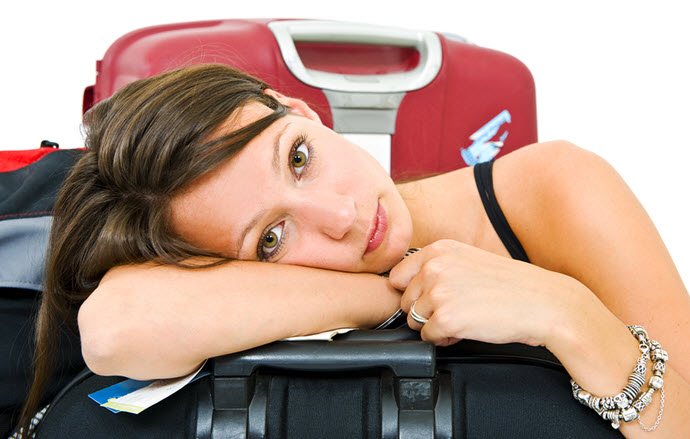By Ed Perkins, Tribune Content Agency
The newest airliners can fly nonstop up to 20 hours, and a handful of current nonstops keep you in the air 17 to 18 hours. But 17 to 20 hours stuffed into one of those tiny economy-class seats poses an experience daunting to many travelers. So the question immediately rises: If you have to fly from, say, Dallas to Sydney, at 8,578 miles and 17 hours, what can you do to alleviate the discomfort?
The short answer is, “You can do quite a bit, but your best options will cost you; how much depends on what you select.
1. Buy a comfortable seat. Ultra-long flights are bearable in premium economy and even enjoyable in business class. Normally, buying a comfortable seat comes at an astronomical price, but you can sometimes find “sale” fares. Even on sale, however, a long intercontinental round-trip costs $1,500 to $2,500 in business class and $1,000 or so in premium economy. If those prices are too stiff for you, at least consider shelling out the extra, usually not more than $200, for an extra-legroom economy seat that most U.S. airlines offer.
2. Bid for an upgrade. When business-class cabins aren’t full, more and more airlines sell upgrades rather than give business-class seats away to frequent flyers, and they’re most likely to do it through a bidding process. Two outfits supply airline bidding systems:
- With Plusgrade, you start by buying an economy-class ticket. Then, you log onto your airline’s website and enter the amount you’re willing to pay for an upgrade, along with your credit card details. A few days before the flight, the airline notifies you whether or not your bid was successful. If successful, you have a confirmed reservation and you pay what you bid; if not, you pay nothing more but remain in the cattle car. Each airline decides details: which flights to bid, minimum bids, whether to give preference to people on expensive economy tickets or frequent flyers, and such. Some lines post a slider that shows how your odds of success vary with the amount of a potential bid. Plusgrade Works with 54 airlines, including many familiar giants.
- Optiontown is similar, but you work it through Optiontown rather than the individual airline. Optiontown also operates a yearly program, which includes options to bid on a seat next to an empty, lounge access, and few others. Optiontown works with a dozen airlines, mostly based in Asia and mostly unfamiliar.
- I’ve also seen ad-hoc upgrade offers by check-in agents at departure, usually around $500 for an intercontinental trip.
With any such system, you’ll wind up paying more than a token amount — some sources recommend bidding a bit less than half the difference in published ticket fares. And be prepared to be stuck in economy: There’s no guarantee that upgrade bidding will be available on any given flight.
3. Break the Trip. On many long trips, airlines based somewhere in the middle often offer no-cost or low-cost stopovers at their home bases. Icelandair and WOW heavily promote free Iceland stopovers; Emirates, Singapore and Turkish promote stopover hotel/sightseeing packages at their home base cities. By pricing both nonstops and stopover itineraries, travelers report finding free or low-cost stopovers at Amsterdam (KLM), London (British Airways), Honolulu (Hawaiian), Paris (Air France), Tokyo (JAL), and others. Many intercontinental frequent-flyer award trips allow one or two free stopovers. Of course, you have to consider the extra time and costs of accommodations at your stopover point.
4. Minimize the discomforts. If you have to stay in regular economy and can’t stop anywhere, follow the “usual suspects” recommendations about long-haul economy travel: Get up and walk around the cabin every hour or two (easier said than done), take along a neck pillow and eyeshade, stay hydrated and avoid excess alcohol. If your doctor says OK, use some form of medication to relax and maybe sleep better. And if possible, allow a full day at your initial destination before doing anything substantial.
(Send e-mail to Ed Perkins at eperkins@mind.net. Also, check out Ed’s new rail travel website at Rail-Guru.com.)
(c) 2017 TRIBUNE CONTENT AGENCY, LLC. Tribune Content Agency — February 7, 2017
Ed Perkins is a nationally syndicated travel columnist, with weekly columns appearing in three dozen U.S. newspapers. He was founding editor of Consumer Reports Travel Letter and has written for Business Traveller (London), Arthur Frommer’s Budget Travel, The New Yorker, and National Geographic Traveler.


Leave a Reply